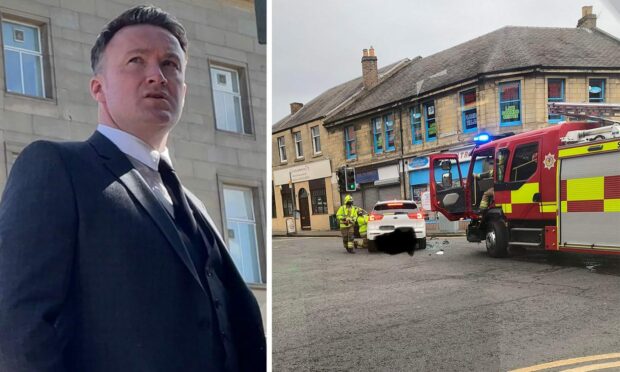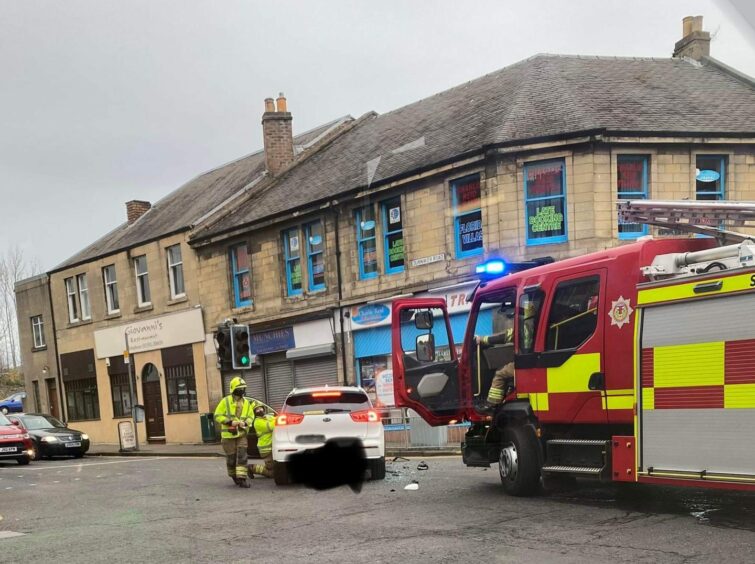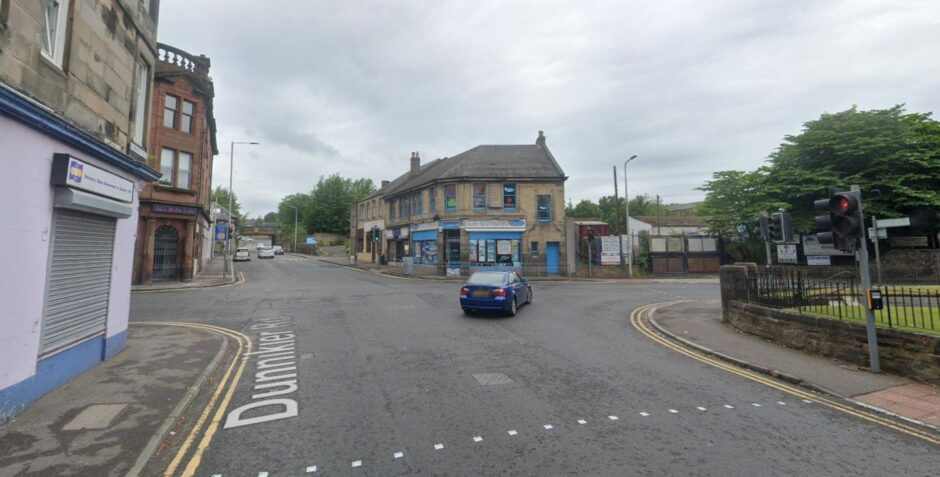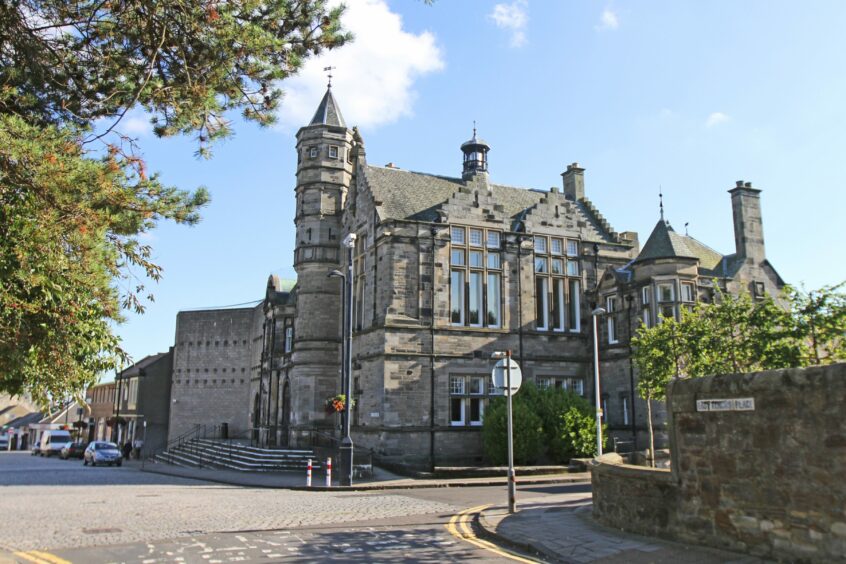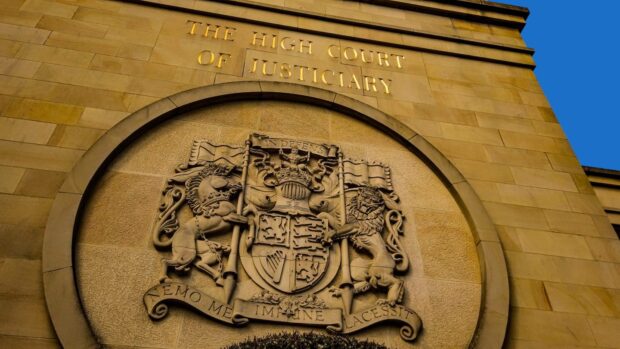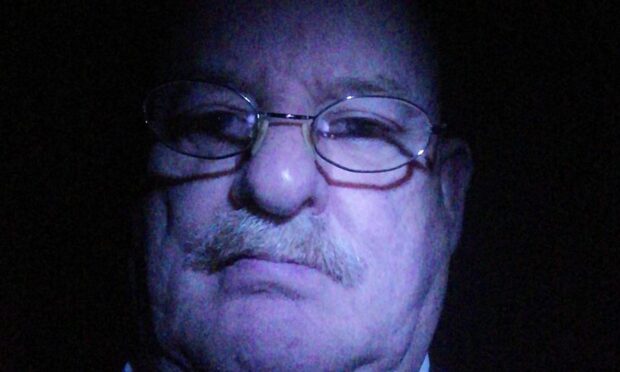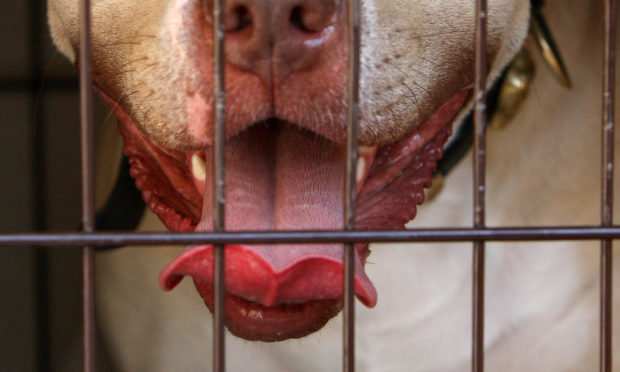A firefighter who collided with a car at a Kirkcaldy junction while responding to a 999 call has been found not guilty of dangerous driving.
Craig Ness was driving the unit responding to an emergency call in Kirkcaldy when it struck pensioner Daniel Kilpatrick’s car at a junction.
Mr Ness was accused of causing serious injury to the 75-year-old by failing to slow sufficiently through a red light at the junction of Dunnikier Road and Victoria Road on November 25 2021.
Sheriff Robert More acquitted 42-year-old Mr Ness of the charge following a three-day trial at Kirkcaldy Sheriff Court.
Crash impact
The trial heard Mr Ness was responding to a fire at a derelict building in the town’s old Fair Isle clinic in Fair Isle Road and the crew were given information youths were seen in the area.
Dashcam footage from the fire engine, played in court, showed the journey from the fire station along Dunnikier Road to the point of collision but the speed at which the vehicle was travelling was not known.
Mr Kilpatrick’s car – with his wife as a passenger – had moved off from Victoria Road to Mr Ness’s left-hand side after the traffic lights turned green.
He told the trial he was not wearing his “broken” hearing aids at the time and did not hear the fire engine’s sirens or see its blue lights.
“I just heard a huge bang and my car was pushed by the fire engine quite near a shop on the opposite lane.
“It hit the right side of the car, the driver’s side.”
He was taken to Victoria Hospital with six cracked ribs and a twisted hip bone.
Devastating toll taken on firefighter
Witnesses, including a bus driver waiting at traffic lights and a delivery driver on a pavement, told the trial they could hear the sirens for about 20 and 15 seconds respectively before the crash, as well as the bullhorn being sounded multiple times.
The bus driver recalled being “very surprised” to see Mr Kilpatrick’s car move off and said he had flashed his lights at him.
Mr Ness told the trial the engine’s blue lights were on, the sirens were sounding on rotating frequencies and he blasted the bullhorn about five or six times on approach to the junction.
The firefighter, who had been driving for the fire service in Kirkcaldy for ten years at this point, said he applied the brakes before the junction and again when he saw Mr Kilpatrick’s car.
He said he believed he had passed through the junction at a slow enough speed and adhered to his training.
Asked by defence lawyer Katie Stewart about incident’s repercussions, he replied: “Massive.
“It’s been two years, give or take. Since then, it’s caused the breakdown of my marriage and I am now living sofa surfing.
“Straight (after) the accident, I came off driving”.
Driving experts gave evidence
Recently retired fire service driver training instructor and former firefighter, Kevin Davanna, said the guidance would be to slow down at a red light and perform a “continuous rolling manoeuvre” – keeping the vehicle moving through the red light with speed reduced to “crawling pace” of about two-to-three miles per hour.
He stressed the driver must be able to stop the vehicle safely within a distance they see to be clear.
Mr Davanna said in this case the fire engine only slowed down when the car came into view and was not travelling through the junction at the appropriate speed.
Inspector Colin Reid, head of driver training at the Scottish Police College, told the trial: “In this case, because of the speed of the fire appliance, there was insufficient time and distance for the vehicle to stop safely should a vehicle approach from the left”.
He described the nature of Mr Ness’s driving as “dangerous” in the circumstances.
He stressed although there is an exemption in law for emergency response vehicles at red lights, it is on the understanding there is a duty of care to consider the actions and position of other road users.
Mr Ness said his recollection from driver training was to perform a rolling manoeuvre at 10mph.
He accepted he was not going as slowly as Mr Davanna stated was proper.
Not guilty verdict
Prior to delivering the not guilty verdict, Sheriff More pointed out Mr Kilpatrick was not wearing hearing aids at the time and did not hear the sirens or see the blue lights.
The sheriff said he was satisfied Mr Ness, of Marjory’s Avenue, Kirkcaldy, did reduce his speed at the junction.
He said other footage played in court – from a camera in a bus sat at the traffic lights – showed the engine came to a stop not far from the collision, suggesting immediate action by Mr Ness.
The Scottish Fire and Rescue Service were contacted for comment on the prosecution but declined to comment.
There is much more local court content at our dedicated page here, or join our Courts Facebook page.
